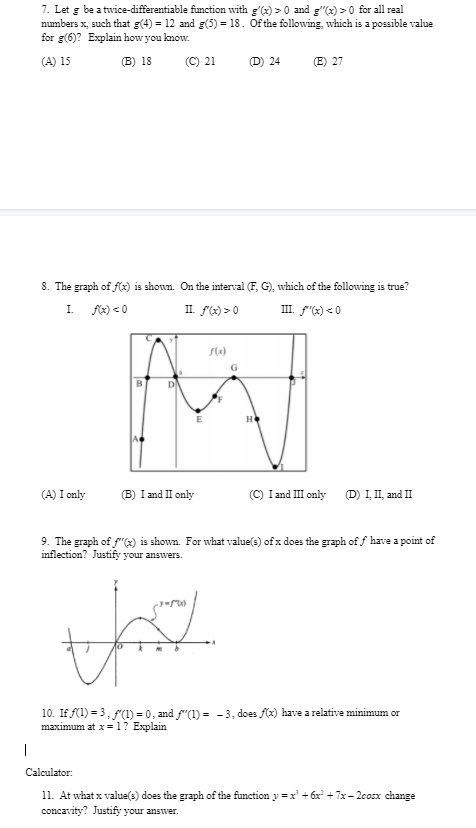Percentage
A percentage is a number indicated as a fraction of 100. It is a dimensionless number often expressed using the symbol %.
Algebraic Expressions
In mathematics, an algebraic expression consists of constant(s), variable(s), and mathematical operators. It is made up of terms.
Numbers
Numbers are some measures used for counting. They can be compared one with another to know its position in the number line and determine which one is greater or lesser than the other.
Subtraction
Before we begin to understand the subtraction of algebraic expressions, we need to list out a few things that form the basis of algebra.
Addition
Before we begin to understand the addition of algebraic expressions, we need to list out a few things that form the basis of algebra.
all parts -- homework help
![1. The graph of f, the derivative of f, is shown for – 2sxs5. On what intervals is f
increasing? Justify your answer.
Graph of
2. The graph of f, the derivative of a function f is shown. At what value(s) of x does
f2) have a point of inflection? Justify your answer.
3. Find all values of x for which the function f defined by fx) = (x - 3)s * is increasing.
Justify your answer.
4. The polynomial function f has selected values of its second derivative " given in the
table. Which of the statements must be true?
(A) f is increasing on the interval (0, 2)
B)f has a local maximum at x =1
(Of has a point of inflection at x=1
* 0 12 3
0 -7 4
(D)f changes concavity in the interval (0, 2)
5. Find the absolute minimum value of g(x) = 4x +3x - 6x +1 on the closed interval
[-2, 1]
6. If f"(x) = x(x+1)x – 2), then the graph of f has inflection points when x =? Justify
your answer.](/v2/_next/image?url=https%3A%2F%2Fcontent.bartleby.com%2Fqna-images%2Fquestion%2Fee043644-8c82-4555-bd39-471becdabd6c%2F0954a4ce-d442-4c04-b4ab-1ca90858580f%2Fi0pir2k_processed.png&w=3840&q=75)

Trending now
This is a popular solution!
Step by step
Solved in 2 steps with 2 images




